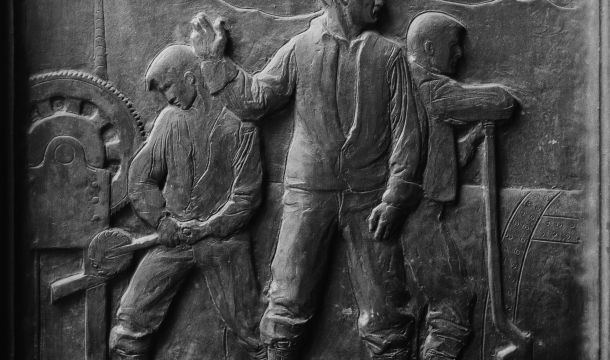Attorneys and clients are familiar with cases in which a plaintiff sues a group of defendants, hoping that the plaintiff can find a "deep pocket" so that at least one of the defendants will pay off the damage claim. A recent example of this on the federal employment level is the ruling of the NLRB last August in Browning-Ferris Industries, 362 NLRB No. 186, which expanded joint employer liability under the Labor Act. Similarly, last July the Wage-Hour Division (WHD) of the U.S. Department of Labor published guidance on independent contractor misclassification. More recently, on January 20, 2016, WHD issued guidance on joint employer liability under the Fair Labor Standards Act (FLSA) and the Migrant and Seasonal Agricultural Worker Protection Act (MSPA) as pertains to joint employment.
According to WHD, joint employment exists when an individual is employed by two (or more) employers such that the employers are responsible, both individually and jointly, for compliance with the statute. This leads to situations where each joint employer is individually responsible, for example, for the entire amount of wages due. If one employer cannot pay the wages because of bankruptcy or other reasons, then the other employer must pay the entire amount of wages; the law does not assign a proportional amount to each employer. Further, when two or more employers jointly employ an employee, the employee’s hours worked for all the joint employers during the work week are aggregated and considered as one employment, including for purposes of calculating whether overtime is due.
According to WHD, it regularly encounters situations where more than one business is involved in the work being performed and where workers may have two or more employers for the work. WHD therefore published this guidance to provide additional information concerning joint employment under two particular laws, the FLSA and MSPA. WHD acknowledged that the joint employment analysis in FLSA and MSPA cases is not the same as the analysis applied under other laws and by the Labor Board. The reason is that the FLSA and MSPA apply a very "expansive definition of employee" which "insures that the scope of employment relationships and joint employment" under these two laws is as broad as possible. In particular, it may not apply the same principles as WHD as these other statutes focus on the "economic realities test" of the situation while most other laws focus on the common law test of the right to control the manner of performing the work.
WHD states that its investigators have come across employment scenarios where there might be joint employment in all industries, including, as examples:
- Home healthcare agencies that share staff and common management;
- Construction (workers who work for a subcontractor and possibly a general contractor);
- Agriculture (farm workers who work for a farm labor contractor and possibly a grower);
- Warehousing and logistics;
- Staffing (providing labor to multiple industries); and
- Hospitality.
While franchising is not a focus of the guidance, it also has a potential to create joint employment relationships between franchisors and franchisees. For example, there are a series of cases pending before the Labor Board alleging that McDonald’s shares responsibility with franchise owners for the employees of the franchisees.
WHD believes that more and more businesses are varying organizational and staffing models by sharing employees or using third-party management companies, independent contractors, staffing agencies, or labor providers. WHD acknowledges that not every subcontractor, farm labor contractor, or other labor provider relationship will result in joint employment. It admits that the varying use of factors creates a sea of uncertainty for employers.
WHD discusses its approach as an effort to insure that workers receive the protections to which they are entitled and that employers understand their legal obligations, so WHD will consider the possibility of joint employment in FLSA and MSPA cases, particularly where: (1) the employee works for two employers who are associated or related in some way with respect to the employee; or (2) the employee’s employer is an intermediary or otherwise provides labor to another employer. It discusses that several analyses may be applied depending on the circumstances of the case, most commonly either a horizontal or vertical joint employment analysis. The focus of a horizontal joint employment analysis is the relationship and association between the two (or more) potential joint employers. The focus of the vertical joint employment analysis is the relationship between the employee and the potential employer and whether an employment relationship exists between them. An analysis must determine whether, as a matter of economic reality, the employee is economically dependent on the potential joint employer. Depending on the industry, the "intermediary employer" in a vertical joint employment relationship could be, for example, a staffing agency, farm labor contractor, subcontractor, or other labor provider, supplier or broker, and the "potential joint employer" could be a parent corporation, a farm owner, higher-tier contractor, or client of the staffing agency or labor provider, supplier or broker.
Even if the contract between a potential joint employer and the intermediary employer may purport to disclaim or deny any responsibility by the potential joint employer as an employer, that type of contractual provision may not be recognized by WHD as to the economic realities of the working relationship between the potential joint employer and the employee.
As one of the many scenarios discussed by WHD, a situation involving labor employed by a dry wall company which is an independent subcontractor on a construction project is cited. The general contractor reserves the right to remove the laborer from the project, controls the laborer’s schedule, provides assignments on site, and both the dry wall and the general contractor supervise the laborer. The general contractor also provides the necessary equipment and materials, provides workers’ compensation insurance, and is responsible for the health and safety of the laborer (and all the workers on the project). Under these factual patters, WHD suggests that the laborer has been continuously working on the general contractor’s construction projects, whether through the dry wall or another intermediary, and the facts are indicative of joint employment of the laborer by the general contractor.
Editor’s Notes: Readers may note the close relationship between the issue of joint employment to that of misclassification of employees as independent contractors. The two concepts are closely related. While the concepts in the January 20, 2016 guidance are not new, they probably are the most extreme advocacy of the use of "economic reality" rather than the common law right to control, that has traditionally governed employee and joint employer issues. The guidance does not constitute a rule of law and it is unknown to what extent judges will defer to the WHD’s new guidance. There is no question, however, that plaintiff’s lawyers will seize upon the language in guidance to argue for new methods of finding joint-employer relationships. Some say that the "big picture" issues relate to the current Administration’s attempts to restrict outsourcing and other emerging forms of work, such as Uber, etc.
Related Content
Get Email Updates
Recent Content

NLRB to Seek Rescission of past Discipline Imposed under Overbroad Employer Work Rules

Do Drive Cam Cameras inside Trucks Violate Employee Rights?

Amazon Considers Risk When Investigating Employee Misconduct

Latest NLRB Attack Goes beyond Non-Compete Agreements to Reach Outside Employment

NLRB Board Addresses BLM Insignia at Work

